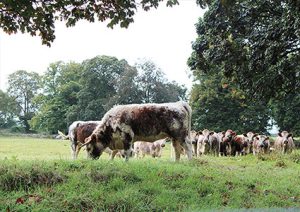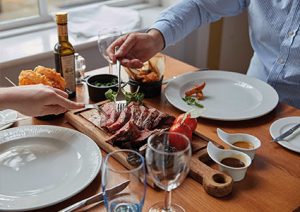Buitelaar Group’s high-welfare approach to sustainable farming is rebuilding biodiversity
The aftermath of World War II saw a dramatic rise in national initiatives for self-sufficiency across the world. Tank manufacturers started building tractors, and the chemical industry shifted its focus onto pesticides and fertilizers, in a drive to enable farmers to grow more food with greater efficiencies than before. In the UK, the government increased its agriculture budgets to bolster these new objectives, but unfortunately, took things too far. It wasn’t long before farmers were harvesting four tons of grain per acre, as opposed to the previous one and a half. Landowners took to tearing out hedges and trees to maximize their farmable areas, ultimately, leading to farming against our environment.
“This era of agricultural aggression left the UK industry tarnished with a number of issues,” explains Adam Buitelaar, CEO of Buitelaar Group (Buitelaar). “During the 1980s, and as a result of food prices being driven so dangerously low by the sheer volume that farmers were producing, we had food mountains of butter, grain and beef. At this point, these staples were worth less on the market than it cost the farmers to produce them, which meant the government had to subsidize their efforts to maintain affordability.
Soil solutions

“Another problem we have been left with is the damage that this kind of farming has inflicted on the soil. Topsoil has been rotavated to such an extent that it has become light enough to literally blow away in the wind and rain. This means it’s making its way into the rivers and the sea and wreaking havoc within their eco-systems. There’s a fear now that we only have around 60 harvests left. This overworking has led to crops and grass diminishing greatly over the years, which is a huge problem.
“Our big drive at Buitelaar is to put a stop to this through implementing regenerative farming,” Adam states. “We are putting cattle onto farms on mob grazing systems, to accelerate biological processes and enhance microbial activity, essentially, strengthening our soil’s crucial ecosystems.
We’re reducing soil disturbing activities such as ploughing and allowing cattle to create natural animal impact through eating one third of the grass, trampling plants and treading organic matter into the soil. These are just some of the necessary steps to work hand in hand with nature and help rebuild the biodiversity of our land. Key to this though, is that it is still possible to attain almost the same weights and gains in the livestock. They may cost a little more, but I believe today’s environmentally-conscious consumers are happy to pay it.”
The Buitelaar Group was established in the Netherlands by Adam’s great-grandfather in 1922, making it a fifth-generation family business. His father brought the enterprise to the UK and was recognized by one of the Queen’s awards in the late 1970s. In its earlier days, the organization was solely centered around livestock and farming, until the family decided to establish an outlet from which it could directly sell its products. As the company moved into the high-welfare end of the meat industry, and began to slaughter and debone its own produce, the lack of consistency among its competitors’ products became increasingly apparent.
“I felt that if we only reared certain breeds of cattle, which we fed the same diets and killed at The aftermath of World War II saw a dramatic rise in national initiatives for self-sufficiency across the world.the same age, the beef would be consistent,” Adam recounts. “We’ve really worked hard to ensure that our customers receive the same great produce every time, so you can see how our meat side has complemented our agricultural division. We take great pride in using every part of the animal, to add as much value to them as possible. We process around 300,000 cattle hides and 3.5 million sheepskins every year, which we sell directly to some of the top brands in Italy and China. In addition to this, we have also entered the pet food market, which, as many people know, is now more aimed at the pet parents rather than the animals themselves. People expect to feed their cats and dogs human-grade food these days, which was an easy fit for us.”
Bolstering biodiversity

Although focused on sustainability across the Group, the family’s historic ties with the farming industry brings a critical recognition that it’s not just about the ecological environment. As Adam details: “The first thing that has to be sustainable is the farmer’s bank account. If they don’t earn enough to feed their family
or heat their home, then the model doesn’t work. Once a stable form of income has been established, then they can look into rebuilding biodiversity and reducing the farm’s impact on the environment.
“We’ve set up a number of development farms to conduct research, but our primary regenerative farming platform is Prumplestown Estate, based in County Kildare, Ireland. Thus far, we’ve ran 187 different soil tests for things such sequestering carbon, species counts of animals, birds and beetles, and worm counts too. In instances elsewhere, farmers have been known to lift a cubic meter of soil from their grounds to find no worms underneath at all, which is unbelievable. What we’re trying to demonstrate, is that livestock is part of the solution to fixing our soil problems. Going way back, for example, here in the UK, we had herds of red deer helping uphold the animal element of the biodiversity circle, but their numbers have unfortunately diminished.
Family-first farming
farming“Besides educating people on the profitability of regenerative farming, we’re also going to use Prumplestown Estate to exhibit the quality of the resultant beef to chefs from around the world. When they visit, they’ll have the full tour of the grounds where the cattle roam, as well as the deboning hall where we hang the meat, and a kitchen where they can sample it. We’re going to publicize it well, as a true celebration of food, but behind the glitz and the glamor, everything will be backed by science. This isn’t just a marketing ploy, it’s the absolute truth.
“I work like hell, because I absolutely love it,” Adam concludes. “Nine times out of ten, I wake up already excited to get into work. I’m a very lucky individual in that sense. I’ve told each of my four children that I’m more than happy to teach them what I know, because I’ve got a hell of a passion, and I’d love to be able to pass that on if it suits them. I work with my wife Clare, who ran the financial side for years, my brother is involved in the business, as is my cousin, and my eldest boy is showing an interest too, which means a lot to me. Family, to me, is everything.”
